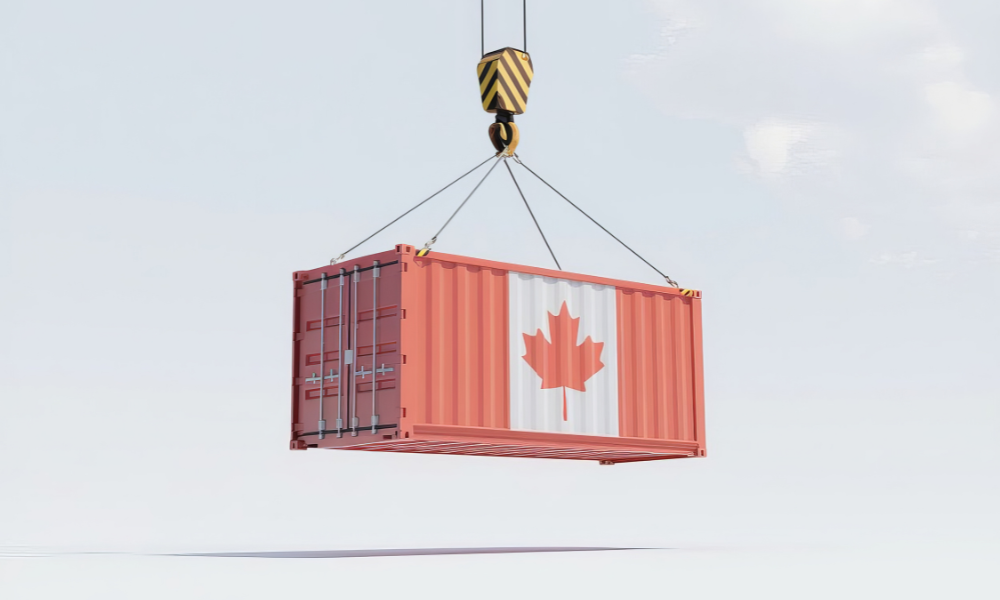Tariffs cut US export share to 70% as Canada posts second-largest monthly deficit in history

Canada posted its second-largest monthly trade deficit on record in June, hitting $5.9bn, as rising US tariffs pushed exporters to seek markets beyond the United States and one-time import costs skewed the monthly balance, according to Statistics Canada.
Merchandise imports grew 1.4 percent, led by a one-time $2bn shipment of oil equipment for an offshore project in Newfoundland.
Without this high-value shipment, total imports would have fallen by 1.9 percent.
Exports rose 0.9 percent, buoyed by higher crude oil prices, but declined 0.4 percent in real terms, as per Statistics Canada.
As reported by Reuters, the widening trade gap in June follows the record $7.6bn deficit in April, when the United States imposed increased sectoral tariffs on Canadian goods.
Exporters shifted trade routes as a result—Canada’s exports to the US as a share of total exports dropped to 70 percent, down from 83 percent in June 2024.
The trade surplus with the US narrowed by half over that period.
Still, month-over-month exports to the US rose 3.1 percent in June, helped by higher oil prices.
However, year-over-year, exports to the US remained 12.5 percent lower. Imports from the US increased 2.6 percent after three straight monthly declines.
Canada’s surplus with the US grew modestly from $3.6bn in May to $3.9bn in June, according to Statistics Canada.
The pressures from these trade dynamics coincided with tariff hikes by the US government.
As reported by BNN Bloomberg, the US doubled global tariffs on Canadian steel and aluminum to 50 percent in June.
Exports of unwrought aluminum and iron and steel products fell 11.3 percent and 11.4 percent respectively. Motor vehicle exports also declined, with passenger cars and light trucks falling 8.9 percent, marking a third consecutive monthly drop.
Crude oil exports rose 3.6 percent, driving a 3.8 percent increase in total energy product exports—the first such increase since January.
Refined petroleum exports surged 19 percent, aided by strong diesel shipments to the US.
According to Statistics Canada, rising global prices contributed to both gains.
Exports of farm, fishing, and intermediate food products increased 6.7 percent, led by a 41.6 percent rise in live animal exports—particularly cattle bound for the US—and a 19.1 percent increase in canola.
Exports to countries outside the US fell 4.1 percent after reaching a record in May.
Declines in shipments to the UK (unwrought gold) and Japan (iron ore) were offset partially by increases to China (canola and copper ore).
Imports from non-US countries fell 0.3 percent, while Canada’s trade deficit with these countries widened from $9.1bn in May to $9.8bn in June.
The broader quarterly view showed deeper trends. Total exports dropped 12.8 percent in the second quarter after reaching a record high in the first.
Compared to Q2 2024, they declined 5.4 percent. Major contributors to the fall included energy products (-19.5 percent), motor vehicles and parts (-16.6 percent), and consumer goods (-16.6 percent).
In constant 2017 dollars, exports fell 9.0 percent. Imports declined 3.9 percent, with the largest drops in motor vehicles (-11.9 percent) and consumer goods (-4.0 percent). However, imports of metals and minerals rose 18.6 percent.
This shifted Canada’s quarterly merchandise trade deficit from $388m in Q1 to $19bn in Q2, reported by Statistics Canada.
At the policy level, Prime Minister Mark Carney, responding to questions about the US tariff hikes and the absence of a new trade agreement by the August 1 deadline, said, “We look at what we can do for our industry that’s most effective… In some cases that will be to remove tariffs.”
He added that his government would “look at opportunities to do so because in the end, we’re looking at having the best impact in Canada,” as reported by CBC.
The Trump administration raised tariffs on some Canadian goods to 35 percent, citing retaliatory Canadian tariffs and fentanyl trafficking.
Canada had earlier imposed 25 percent tariffs on a list of US goods totalling $29.8bn.
Carney said the federal government would apply tariffs where they have “maximum impact on the United States and minimum impact in Canada.”
During a visit to British Columbia, Carney announced $1.2bn in softwood supports in response to increased US duties.
The package includes $700m in loan guarantees and $500m for market diversification and product development.
He also linked Canadian lumber production to the Build Canada Homes initiative, a $25bn program for affordable housing that will prioritise domestic materials.
US Ambassador to Canada Pete Hoekstra told CTV News that Canada is still a priority for the US, but Washington is currently focused on China.
He claimed that Canada's effective tariff rate remains low, around five percent, and criticised retaliatory tariffs, saying they placed Canada “in the same category as China.”
Despite the tensions, Hoekstra described Canada’s current position as “very enviable,” referencing Canadian negotiator Kirsten Hillman.
He also said negotiations were slow but not stalled and expected them to take time.
Public opinion remains cautious.
Nik Nanos told CTV News that Canadians are growing increasingly anxious over the unresolved trade issues.
While Carney’s polling support remains strong, Nanos said that “the big question is: how many times will Canadians be accepting of a prime minister that promises something, and that can’t meet a timeline?”



